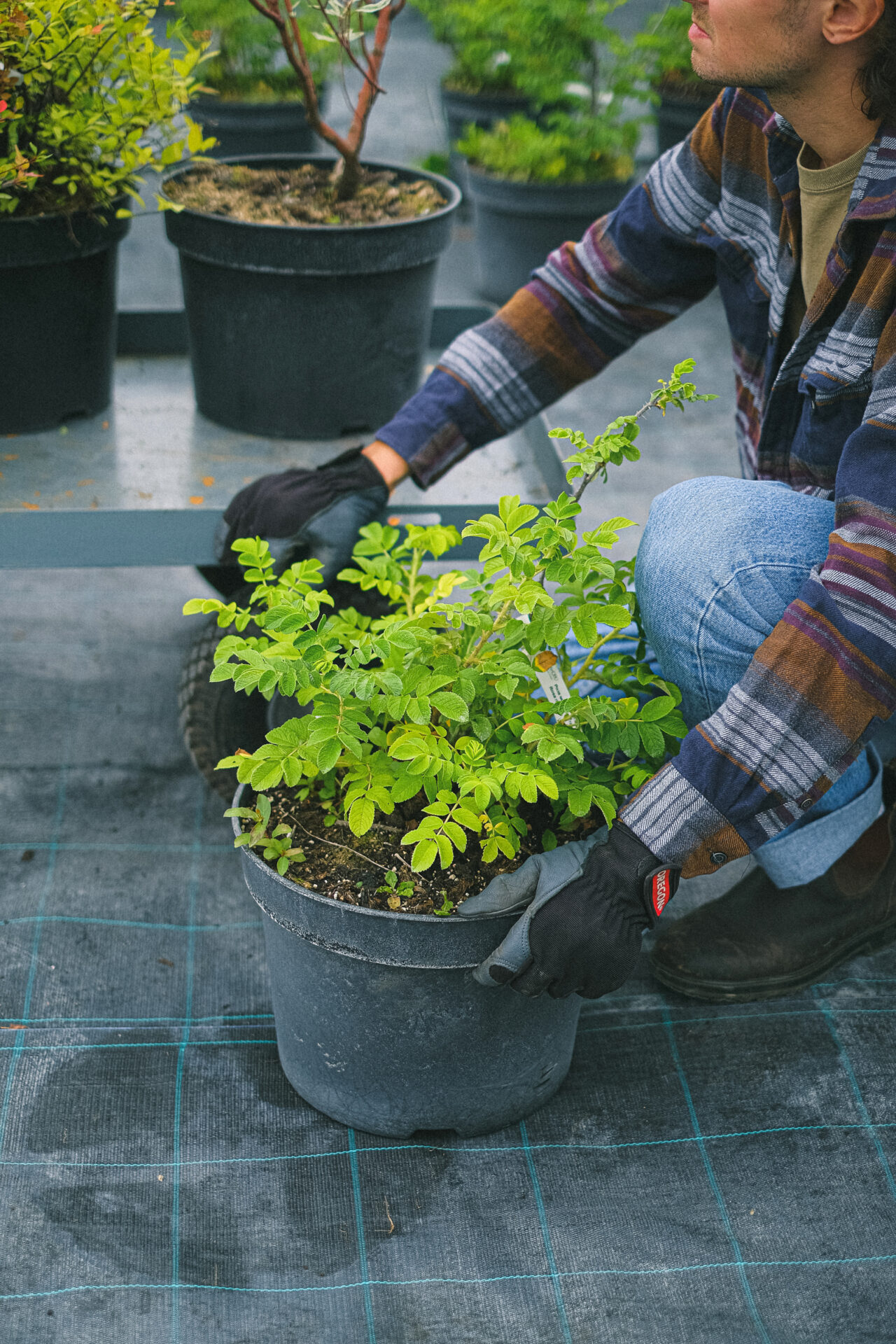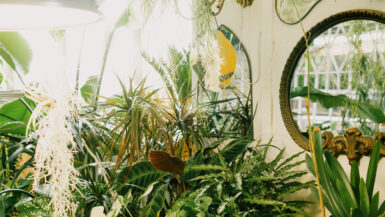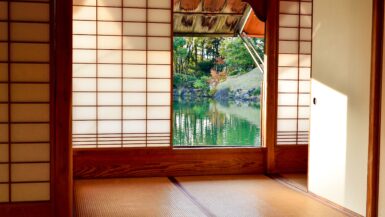As urban living spaces continue to shrink, indoor vertical gardening has emerged as an innovative solution for bringing nature indoors while enhancing the aesthetics of your home decor. This comprehensive article will explore building a vertical garden in your home, from choosing the right plants and containers to the various techniques and design ideas to transform your vertical garden into a living, breathing art.
Regardless of your experience level, this guide will provide the knowledge and inspiration needed to create a thriving indoor oasis that improves your living environment and adds style and sophistication to your home decor. So, let’s begin our journey towards enhancing your living space with the vibrant beauty of a vertical garden.
Choosing the Right Plants for Your Indoor Vertical Garden
Selecting the most suitable plants for your indoor vertical garden ensures its success and longevity. This section will explore various factors to consider when choosing plants, such as their growth habits, light requirements, and compatibility with other plants. By carefully considering these factors, you can create a vertical garden that thrives and complements your home decor.
Considering Growth Habits and Plant Sizes
When selecting plants for your vertical garden, consider their growth habits and mature sizes. Choose plants with similar growth rates, as mixing fast-growing plants with slower-growing ones may lead to the former overshadowing the latter.
Opt for plants with compact growth habits or those that can be easily pruned to maintain their size. Some popular plant choices for indoor vertical gardens include ferns, pothos, spider plants, and various succulents.
Light Requirements and Environmental Preferences
The location of your indoor vertical garden will significantly influence the types of plants that will thrive in it. Consider the light levels where you plan to install your garden and choose plants with similar light requirements.
For instance, if your vertical garden will receive indirect or low light, select plants such as snake plants, ZZ plants, or philodendrons. Additionally, consider your chosen plants’ humidity levels and temperature preferences to ensure they thrive indoors.
Plant Compatibility and Visual Appeal
In addition to growth habits and environmental preferences, consider the compatibility of your chosen plants. Select plants with similar watering and feeding requirements, as this will make maintenance much more manageable. Moreover, think about the visual impact of your plant choices.
Aim for a mix of different textures, colors, and shapes to create an eye-catching display. To further enhance the aesthetics of your vertical garden, incorporate Indoor Vertical Garden Design Tips for Beginners for a cohesive and visually appealing result.
Choosing Plants with Air-Purifying Qualities
One of the many benefits of indoor vertical gardens is their ability to improve air quality by filtering pollutants and releasing oxygen. Therefore, air-purifying plants in your vertical garden can significantly enhance your indoor environment. Some popular air-purifying options include peace lilies, English ivy, and rubber plants.
With this knowledge, you can carefully select plants that will thrive in your indoor vertical garden and contribute to a healthier, more aesthetically pleasing living space.
Creative Wall-Mounted Garden Designs
Indoor vertical gardens provide endless opportunities for creativity and personalization. Wall-mounted gardens, in particular, offer a unique way to make the most of your vertical space while adding a touch of nature and elegance to your home decor.
This section will explore various creative wall-mounted garden designs to help you transform a simple wall into a vibrant, living focal point. From repurposing everyday household items to combining various planters, these ideas will inspire you to create a one-of-a-kind vertical garden that reflects your style and enhances your home’s ambiance.
Upcycling Household Items into Planters
One inventive approach to creating a wall-mounted garden is repurposing everyday items into unique plant containers. Using items such as mason jars, wooden crates, or old picture frames can give new life to these objects while reducing waste.
For instance, you can create a charming rustic garden by attaching small wooden crates to the wall and filling them with compact plants like succulents or herbs. Alternatively, you can transform a vintage picture frame into a living work of art by directly attaching small pots or air plants.
Modular and Geometric Designs
A popular trend in wall-mounted garden designs is modular and geometric shapes. These designs often feature interconnected planters or containers, creating visually striking patterns that can be easily rearranged or expanded upon.
Consider using honeycomb-shaped planters or a series of triangular shelves to display your plants in a modern, eye-catching arrangement. This approach adds visual interest to your vertical garden and allows for easy customization and adaptability as your plant collection grows.
Living Wall Art and Moss Graffiti
Consider creating living wall art or moss graffiti for a unique wall-mounted garden design. Living wall art involves arranging plants in a specific pattern or design, often combining colors, textures, and shapes. This can be achieved with small potted plants, air plants, or even moss, which can be applied directly to the wall to form intricate designs or inspirational messages.
Moss graffiti, in particular, is an eco-friendly and refreshing alternative to traditional wall art. It adds a touch of whimsy and intrigue to your vertical garden.
Combining Hanging and Mounted Planters
Combine various planters, such as hanging and mounted containers, to create a dynamic, multi-dimensional, wall-mounted garden. This approach allows for greater flexibility and creativity in your design, as you can play with different heights, materials, and plant arrangements.
For instance, you might install floating shelves alongside macrame plant hangers or mount small pots directly onto the wall in a staggered pattern. By experimenting with different combinations, you can create a visually captivating display that showcases your plants uniquely.
By exploring these creative wall-mounted garden design ideas and incorporating elements that resonate with your style, you can create an indoor vertical garden that serves as a functional and eco-friendly addition to your home and as an artistic expression of your personality and taste.
Caring for Your Indoor Vertical Garden
Incorporating a vertical garden into your home decor not only adds an element of natural beauty but also requires special care and attention to ensure its continued success. In this section, we will discuss essential care tips and practices that will help you maintain a thriving indoor vertical garden, from watering and feeding routines to monitoring the health of your plants. With these guidelines in mind, you’ll be well-equipped to nurture your vertical garden and enjoy its many benefits for years.
Establishing a Watering Routine
Creating a consistent watering routine is crucial for the health of your indoor vertical garden. Each plant type has unique water requirements, so it’s essential to research your chosen plants’ needs and adjust your watering schedule accordingly.
Vertical gardens tend to dry out faster than traditional gardens, so check the soil moisture regularly and water when necessary. Additionally, consider using a drip irrigation system or self-watering planters to ensure your plants receive a steady water supply without over- or under-watering.
Feeding Your Plants with Nutrients
Proper nutrition is vital for the growth and vitality of your indoor vertical garden. Most plants require a balanced fertilizer that provides essential nutrients like nitrogen, phosphorus, and potassium. Following the recommended feeding schedule for your specific plants is necessary, as over-fertilizing can be just as harmful as under-fertilizing. Incorporating slow-release fertilizers or organic compost can also be beneficial, as these methods provide a steady supply of nutrients over an extended period.
Pruning and Grooming for Healthy Growth
Regular pruning and grooming are essential for maintaining the aesthetics and health of your indoor vertical garden. Pruning involves removing dead or damaged leaves, stems, and flowers, which helps to promote healthy growth and prevent the spread of disease.
Grooming, on the other hand, entails shaping your plants to maintain their desired size and appearance. By incorporating these practices into your care routine, you can keep your vertical garden looking lush and vibrant while ensuring your plants’ continued health.
Monitoring for Pests and Diseases
Keeping a watchful eye on your indoor vertical garden is critical for early detection and treatment of pests and diseases. Regularly inspect your plants for signs of infestation or illness, such as yellowing leaves, wilting, or the presence of insects.
If you notice any issues, promptly address them by isolating affected plants, removing infected parts, and applying appropriate treatments, such as insecticidal soap or fungicide. By staying vigilant and proactive in your care, you can prevent minor problems from escalating and protect the overall health of your vertical garden.
Providing Adequate Light and Air Circulation
Proper light and air circulation are essential for the well-being of your indoor vertical garden. Position your garden in an area that receives the appropriate light for your chosen plants. If necessary, supplement with artificial lighting, such as LED grow lights, to meet their light requirements. Good air circulation is crucial for preventing mold and other diseases, so ensure your vertical garden is not cramped or poorly ventilated. You might also consider using a small fan to circulate air around your plants gently.
By following these care guidelines and adjusting your practices to meet the unique needs of your indoor vertical garden, you can create a thriving, healthy environment for your plants to flourish. This, in turn, will ensure that your vertical garden continues to be a beautiful and lively addition to your home decor.
Benefits if You Build a Vertical Garden
When you build a vertical garden into your home decor, it adds a touch of natural beauty and offers numerous practical and aesthetic benefits. This section will explore the advantages of integrating a vertical garden into your living space, from enhancing air quality and space utilization to providing a unique focal point and boosting your overall well-being.
Understanding these benefits will inspire you to create a thriving indoor oasis that beautifies your home and contributes to a healthier and more enjoyable living environment.
Improved Air Quality and Humidity Regulation
One of the most significant benefits of vertical gardens is their ability to purify the air and regulate humidity within your home. Plants naturally absorb pollutants and release oxygen, which can help improve indoor air quality and create a healthier living environment.
Additionally, plants act as natural humidifiers by releasing moisture through transpiration. This can help maintain optimal humidity levels in your home, promoting overall comfort and well-being.
Maximized Space Utilization
Vertical gardens are an excellent solution for those with limited floor space or small living areas. By utilizing vertical space, you can incorporate a variety of plants into your home without sacrificing valuable floor space. This is especially beneficial for urban dwellers who may not have access to traditional outdoor gardening areas.
Furthermore, vertical gardens can act as natural partitions or screens, providing privacy and delineating different areas within your living space.
Unique Focal Point and Visual Interest
Integrating a vertical garden into your home decor can be a striking focal point that adds visual interest and depth to your living space. Various plants’ combinations of textures, colors, and shapes can create an eye-catching display that enhances your home’s overall aesthetic appeal. A vertical garden can also serve as a conversation starter and showcase your creativity and personal style.
Reduced Noise and Stress Levels
In addition to their aesthetic benefits, vertical gardens can help reduce noise levels within your home by absorbing and diffusing sound waves. This can create a more peaceful and tranquil environment, especially in busy urban settings.
Moreover, studies have shown that exposure to nature and plants can help reduce stress levels and promote relaxation and well-being. Incorporating a vertical garden into your home decor can create a soothing sanctuary supporting your mental and emotional health.
Opportunity for Edible Gardening
For those interested in growing their food, a vertical garden allows them to cultivate various herbs, vegetables, and fruits within limited indoor spaces. This will enable you to enjoy fresh, home-grown produce and promote a sustainable, eco-friendly lifestyle. Additionally, edible vertical gardens can add visual appeal and fragrance to your living space, enhancing your home decor.
These numerous benefits demonstrate that incorporating a vertical garden into your home decor can significantly enhance your living environment by improving air quality, maximizing space utilization, and adding visual interest.
Furthermore, vertical gardens can contribute to a healthier and more sustainable lifestyle while providing a unique and creative outlet for expressing your style. With these advantages in mind, it’s no wonder that vertical gardens are becoming an increasingly popular addition to modern home decor.
DIY Build a Vertical Garden Ideas for Any Space
Creating a vertical garden doesn’t have to be complicated or expensive. With some creativity and basic materials, you can design a stunning and functional vertical garden for any space in your home. In this section, we will explore DIY vertical garden ideas that cater to different styles and preferences, offering you the inspiration and guidance needed to craft a personalized garden display that enhances your home decor.
1. Transform a Wood Pallet into a Rustic Garden Display
One popular and budget-friendly DIY vertical garden idea involves repurposing a wood pallet into a rustic garden display. Start by securing landscape fabric to the back of the pallet to create a barrier that will hold the soil in place.
Then, fill the gaps between the pallet slats with potting soil and plant your chosen plants directly into the soil. Once the plants are established, mount the pallet on the wall or lean it against a sturdy surface for a charming, rustic vertical garden.
2. Create a Minimalist Display with Hanging Pots and Shelves
For a minimalist and modern aesthetic, consider creating a vertical garden with hanging pots and floating shelves. Choose sleek, lightweight pots with built-in hanging options, such as those with holes for ropes or hooks.
Hang these pots at varying heights on the wall for a visually appealing display. Alternatively, install floating shelves on the wall and place your potted plants on them for a clean, streamlined look that complements minimalist home decor.
3. Assemble a Ladder Garden for a Vintage Vibe
A ladder garden is an inventive DIY vertical garden that adds a vintage touch to your space. Repurpose an old wooden ladder by painting or staining it in your desired color, then arrange your potted plants on the ladder’s steps. You can also attach hooks or small shelves to the ladder to support your plants. This versatile design can be placed indoors or outdoors and quickly moved.
4. Build a Custom Trellis for Climbing Plants
If you have a penchant for climbing plants, consider building a custom trellis for your vertical garden. Construct a simple wooden or metal frame and attach a grid of wire or twine to create a supportive structure for your plants to climb. This DIY vertical garden idea is perfect for showcasing climbing plants like ivy and clematis or even edible vines like beans and peas.
5. Design a Modular Wall Garden with PVC Pipes
Create a modular wall garden using PVC pipes for a unique and modern DIY vertical garden. Cut the pipes into sections of varying lengths and arrange them in a visually appealing pattern on the wall. Secure the pipes to the wall using brackets or hooks, then fill them with potting soil and plant your chosen plants.
This innovative design allows for easy customization and is perfect for small spaces or areas with limited natural light. The PVC pipes can be easily mounted near windows or under artificial lighting.
With these DIY vertical garden ideas, you can create a personalized and visually captivating display that suits your space and style preferences. Whether you opt for a rustic wood pallet garden, a minimalist hanging pot display, or a custom trellis for climbing plants, your vertical garden will enhance your home decor and provide a nurturing environment for your plants to thrive.







Leave a reply